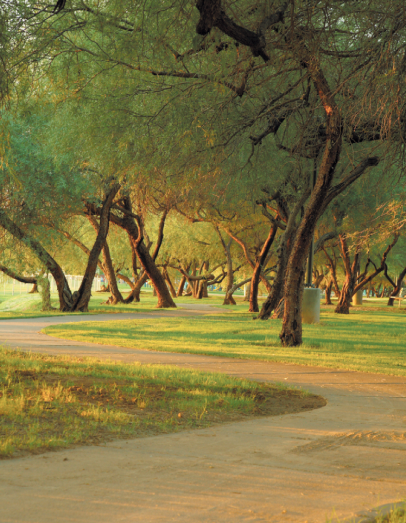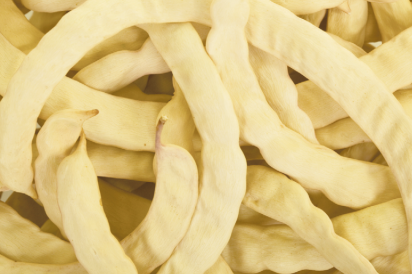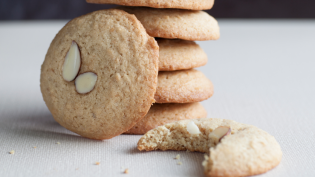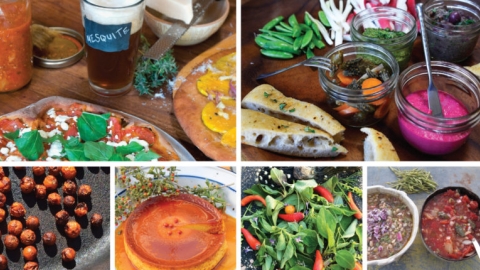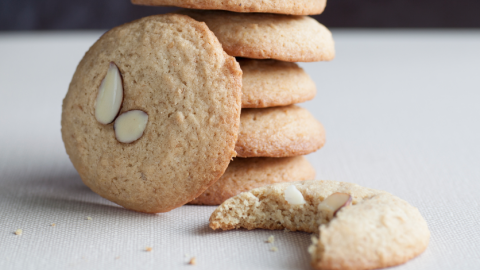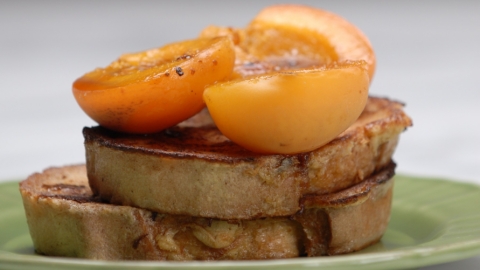Eat Mesquite! A New Community Cookbook
Back in the spring of 1996, Tucson's Dunbar Springs neighborhood was a typical urban desert neighborhood. It featured wide streets, little shade and people retreating to the comfort of their air-conditioned homes to avoid the hot afternoon sun. The residents knew that as the summer wore on and the heat took hold, mornings, evenings and even the dead of night would not be pleasant outside.
A small group of neighborhood residents saw the lack of community interaction and, in the cool spring evening hours, invited the neighbors for a potluck.
They posed the question "What kind of neighborhood do we want to live in?" They got answers like, "It's too hot, we need more shade, and we need more life on the streets."
Encouraged by a conversation with an African water farmer, the community decided to "plant the rain" before they installed trees in their neighborhood and set out to establish a series of water-harvesting earthwork gardens throughout the area.
Brad Lancaster, author of Rainwater Harvesting for Drylands, says, "By planting the rainwater before the trees we are increasing the success of the trees living by more than 50%, because typically people plant trees and forget about them."
Over time, the neighborhood has planted more than 1,200 desert native trees while educating and building community. Their tree-planting process started by identifying native trees and plants that are much more resilient here in the desert Southwest than the non-natives. Native species also attract a significant number of pollinators. While a Chilean mesquite (non-native) attracts only 12 pollinators, a native variety of mesquite such as Texas Honey or Velvet attracts over 60. Additionally, the non-native varieties are typically weaker than the natives and have a tendency to die off in drier years. Food-producing varieties such as the Mesquite, Palo Verde and Ironwood were selected in order to grow food while creating shade.
To get trees of their own, residents had to agree to help their neighbors plant their trees, thus learning how to do it, before getting help with their own trees. This really drove home the educational and community aspects of the process, reconnecting neighbors and "rooting" them in the Sonoran desert flora and fauna.
Once the trees were thriving and there was food growing outside of every door, the community needed to figure out what to do with all of it. They soon discovered how easy it was to collect the mesquite beans hanging from the trees, dry them and mill them. That bonding experience led to get-togethers and, as is usually the case when friends get together, they ended up in the kitchen. Thus the Dunbar Springs annual mesquite pancake and bean milling event was established.
In 2003 the group came together as Desert Harvesters and purchased an industrial-strength hammer mill to mill all their mesquite beans. (This is the same mill that visits Phoenix every November for the Valley Permaculture Alliance's annual Mesquite Bean Milling.)
Once the mill was put into action they were challenged to find uses for all the great mesquite meal the community was producing. The answer came in the form of a contest to see who could come up with the best recipes for their new Eat Mesquite! cookbook. The response was astounding. Several dozen cooks and taste testers sampled over 150 recipes, from beer to biscotti, which incorporated mesquite in some way.
The recipes were judged on the ease of replication, their final taste and how well they highlighted the unique taste of mesquite. Recipes that required ingredients from far away were eliminated and the final book (which is available at local venues such as the Downtown Phoenix Public Market) features recipes from sweet and savory dishes to beverage and breakfast delights.
The introduction of the book also includes bonus articles: How to Harvest, Mill and Store Mesquite; Tips for Cooking with Mesquite; and Harvesting Other Native and Local Foods.
Food is a strong thread with which we can weave closer communities. From the very start, this Tucson community came together and nurtured an idea that made their living environment a better place. The cookbook began with the planting of a tree and then grew from there.
We all have the power to create change in our neighborhoods simply by standing up and saying, "I want to do this!" and sharing our vision with others in our communities. Go ahead–plant your own cookbook. Then tell us about it!
DESERT HARVESTERS
For more information on the new, updated version of the cookbook, Eat Mesquite and More!, milling your own mesquite beans or purchasing mesquite meal, visit DesertHarvesters.org.


